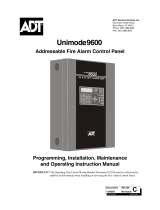
,QVWUXFWLRQVIRUXVH_ REGARD® 3900
Contents
REGARD® 3900
Contents
Safety-related information
Conventions in this document
Meaning of the warning notices
Typographical conventions
Trademarks
Description
Feature description
Intended use
Limitations on use
Approvals
Components
General instructions
Display PCB
Inhibit switch
Contrast settings
Input module
Input module relay settings
Relay module
Relay module relay settings
Output module
Installation & commissioning
General instructions
Positioning and mounting the control unit
REGARD® 3900 and 3920
REGARD® 3910
Cable entry
Grounding plate for the cable shielding
Power supply
AC power supply
DC supply voltage
AC and DC power supply
Installation of the control modules
Combining the control modules
Numbering the control modules
Connecting control modules and display PCB
Connecting remote sensor transmitters
4–20 mA two-wire transmitter
4–20 mA two-wire transmitter with safety barrier
4–20 mA three-wire transmitter
Connecting other external sources
Remote acknowledgement
Relay terminals (input and relay modules)
Output module terminals





















